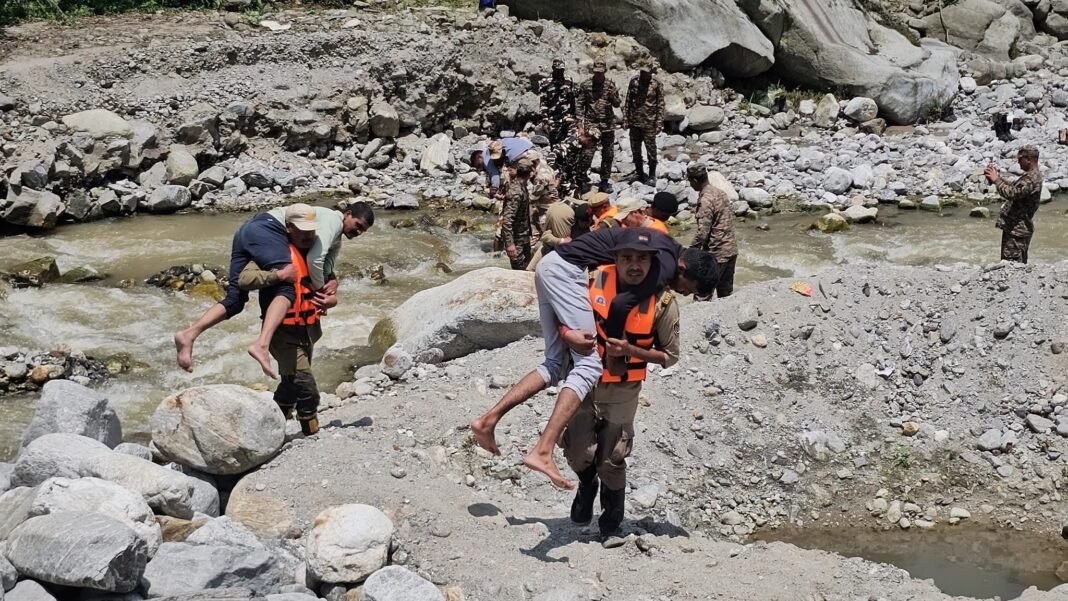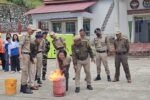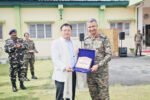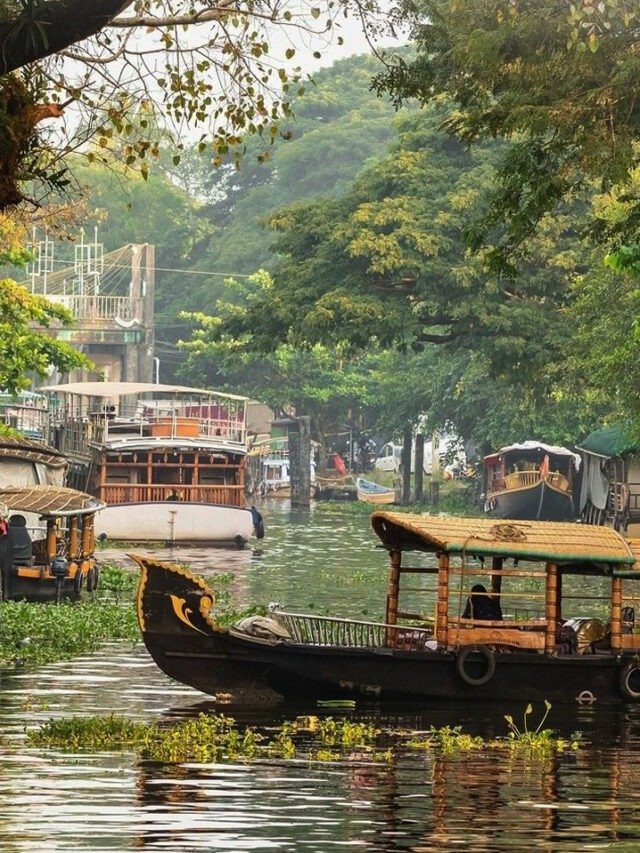HT Bureau
NAMSAI, June 11: A large-scale joint civil-military mock drill on disaster preparedness was successfully conducted today at Mhentsang Rong (Bomdir Nallah) in Tawang, aimed at enhancing inter-agency coordination and strengthening response mechanisms in the event of natural disasters such as landslides, earthquakes, flash floods, and fires.
The mock drill commenced at 11:30 AM and was personally supervised by Brigadier Bhupal Singh, SM, Commander of the Tawang Brigade. The meticulously planned exercise saw active participation from multiple agencies including the Indian Army, 38th Battalion of Sashastra Seema Bal (SSB), 55th Battalion of Indo-Tibetan Border Police (ITBP), 12th Battalion of the National Disaster Response Force (NDRF), Tawang Fire Brigade, Tawang Police, KDS District Hospital medical team, and Veterinary Officers from the Department of Animal Husbandry & Veterinary, Tawang.
Preparations for the drill began a day earlier, on June 10, with a thorough inspection of static equipment and a joint briefing session chaired by Brigadier Singh and District Disaster Management Officer (DDMO) Genden Tsomu at the Brigade Headquarters. Detailed response protocols were discussed to ensure seamless coordination during the exercise.
The mock drill was carried out across five different locations, simulating multiple disaster scenarios to evaluate the efficiency, agility, and coordination of rescue operations under high-pressure conditions. These included realistic enactments of landslides, fire outbreaks, flash floods, and earthquakes.
During the debriefing session, Brigadier Singh lauded the performance and cooperation of all participating teams. He emphasized that while drills are valuable, actual disaster situations demand rapid and well-coordinated responses, citing past experiences with flash floods in the region. “A moment’s delay can cost lives,” he said, urging personnel to maintain a constant state of readiness.
Brigadier Singh further proposed the identification of responsible individuals in every locality to disseminate early warnings during emergencies. Highlighting the critical nature of the first two hours following a disaster, he advised communities in vulnerable areas—particularly those located near steep slopes or densely populated zones—to develop localized disaster management plans with clearly marked evacuation routes.
He also stressed the need for regular mock drills, particularly during the monsoon season, to reinforce preparedness. He recommended that communities be equipped with basic first-aid knowledge and ensure pre-stocking of essential supplies such as food, water, and medicine in disaster-prone zones.
This joint exercise reflects the unwavering commitment of both civil and military agencies to protect lives and minimize disaster impact through proactive planning and coordination.
Meanwhile, Deputy Commissioner Namgyal Angmo, Superintendent of Police Dr. D.W. Thongon, and DDMO Genden Tsomu participated in a virtual meeting with the Chief Secretary of Arunachal Pradesh, where region-wide monsoon preparedness measures were reviewed.












